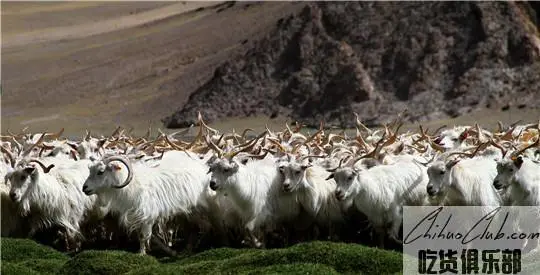
Day cashmere
-
Update date::
-
Date of protection::
-
Protected range:The production area of Japanese cashmere is the administrative area of 5 townships in Ritu Town, Risong Township, Hotbang Township, Doma Township and Dongpu Township of Rito County, Tibet Autonomous Region.
-
Category:
The cashmere of the day is the cashmere produced by the white cashmere goat of the Japanese soil in the Tibet Autonomous Region from 4300 meters to 5300 meters, also known as the cashmere cashmere. Because of its outstanding fineness and natural length, it has unique qualities such as good elasticity and bright color. It has been praised as “soft gold” by the processing industry and “fiber gem”, which has been a well-known product in the international market since ancient times. The cashmere products produced by this raw material have excellent texture, delicate hand feeling and good warmth retention, and are favored by domestic and foreign markets and highly respected by consumers.
The Japanese county mainly raises yak, yak, sheep, goats, horses and other livestock, of which the proportion of goats is large, and the white cashmere goat is a special resource of our county. The white cashmere goats in our county accounted for 3.69% of the total number of Tibetan goats, accounting for 10.86% of the total number of goats in Qiangtang. The white cashmere of our county is the most excellent goat breed resource in China. It has the characteristics of high purity, high fineness, high yield, high density of hair follicle, fine fiber and excellent cashmere. It has always been famous in the world and has won China. The Agricultural Exposition Silver Award and the Gold Medal are called "soft gold" of the Japanese soil.
Technical requirements for the quality of Japanese cashmere: First, the variety of white cashmere goats. Second, feeding conditions 1. Feeding environment and feed conditions: (1) Feeding environment: The altitude of the production area is 4300m to 5300m, the natural grassland is broad and the water source is sufficient. (2) Feed conditions: natural vegetation is the main feed, and a small amount of green hay and concentrate are supplemented in winter. 2. 3. Conditions for housing: open-air sheep in summer and semi-closed in winter. The pens have a higher terrain and good drainage. 4. Feeding management: (1) Cold season feeding management: Between October and April, grazing is carried out for 6 hours to 8 hours per day. In case of heavy snow and mountain closure, feed and feed, feed the green forage. (2) Warm season feeding management: During the period from May to October, grazing is carried out for 8 hours to 10 hours per day. (3) medicated bath deworming: medicated bath deworming within 2 weeks after fluffing. 5. Environmental and safety requirements: The prevention and control of the breeding environment and epidemic diseases must comply with relevant state regulations and must not pollute the environment. Third, fleece 1. Fleece time and frequency: fleece once during the period from June to July. 2. First cut off the outer hair tips with scissors, then spray some washing powder on the sheep, then press the fleece in the order from front to back and top to bottom. When fluffing, the comb should be close to the skin and evenly applied. 3. Fleece step: clean the site, select the sheep with "top velvet", cross-bundle binding before and after the limbs, in the order from top to bottom, use the iron comb to comb the debris on the coat, fleece. 4. Storage: After catching and cutting the velvet and hair, dry it properly, store it properly, and pay attention to moisture during storage. Fourth, the quality characteristics 1. Sensory features: velvet white, no color fiber, soft, fine fiber, fineness and length. 2. 3. Safety and other quality technical requirements: Product safety and other quality technical requirements must comply with relevant national regulations.
Apply to:
Producers within the scope of the Japanese-born cashmere production area may apply to the Quality and Technical Supervision Bureau of the Ali District of the Tibet Autonomous Region for the use of the “Special Mark for Geographical Indication Products”, which shall be reviewed by the Quality and Technical Supervision Bureau of the Tibet Autonomous Region and reported to the General Administration of Quality Supervision, Inspection and Quarantine for approval. The inspection mechanism of the Japanese cashmere is selected by the Quality and Technical Supervision Bureau of the Tibet Autonomous Region in the inspection institutions that meet the qualification requirements.